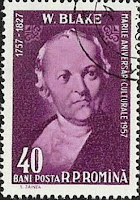England's "Jerusalem"

As a country within the United Kingdom, the official anthem of England is that of the United Kingdom, namely "God Save the Queen". However, like the other constituent countries in the UK, there is often a need for a unique English anthem with a separate identity from the anthem of the UK as a whole, one that is used in some situations, and currently enjoys the most popular support, is "Jerusalem".
First appearing as a poem by William Blake entitled "And did those feet in ancient time" in the early 19th century, it is based on a tale that Jesus visited what is now England as a youth. The "dark Satanic mills" phrase is a reference to the factories and mills of the Industrial Revolution then just beginning, forever changing the landscape and society.
The poem did not garner much attention until the First World War over a century later, when it was included in a patriotic anthology of poems, and was seen as expressing what England was fighting for at the time. Hubert Parry was then requested to put the poem to music, which was completed in 1916. A performance in 1922 (orchestrated by Edward Elgar, the composer of "Land of Hope and Glory") prompted King George V to say that he preferred "Jerusalem" over "God Save the King".
"Jerusalem" is more and more gaining favour in England and is becoming the most popular patriotic song. It has been used as the English national anthem before rugby and cricket matches, is sung in churches on St. George's Day (the English national holiday - the feast day of England's patron saint) and often leads popular opinion polls when the question of a unique English anthem is asked. Critics, however, point out that it would not make a suitable anthem due to its religious nature and its references to a foreign city.
So far, the British Parliament has not made any official proclamation on the issue.
The stamp above of William Blake was issued by Romania in 1958.






